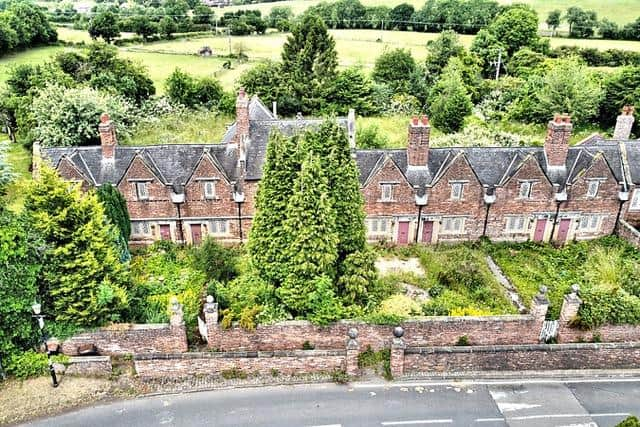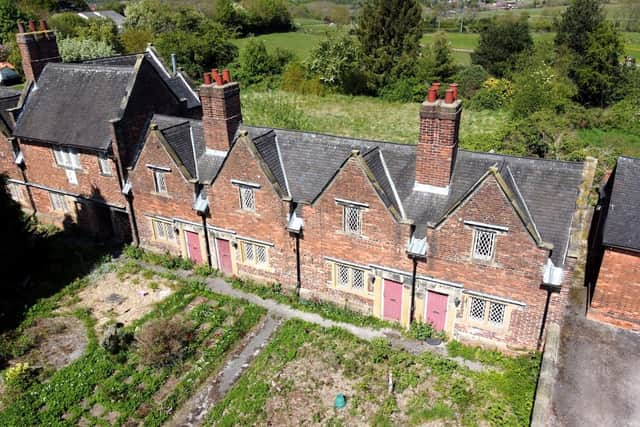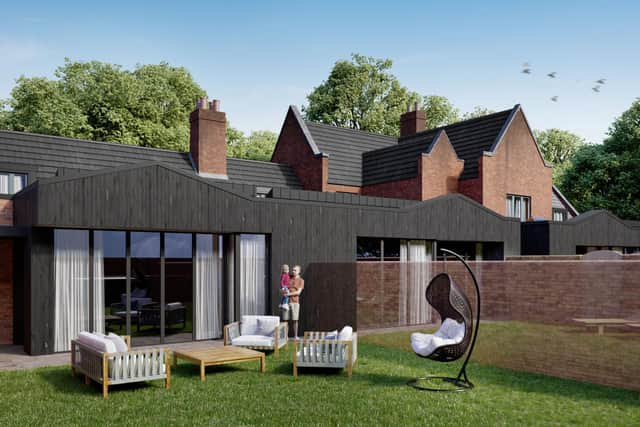Developer's architect defends plan to upgrade historic almshouses near Derbyshire town after controversial go-ahead
and live on Freeview channel 276
Listed building consent has been granted to develop the Grade II listed Willoughby Almshouses at Cossall, near Ilkeston.
But a national heritage conservation charity, the Society for the Protection of Ancient Buildings (SPAB), said the development would cause huge damage to the landmark building and has called on Broxtowe Borough Council to reconsider its decision. Organisations including the Council for British Archaeology and Historic Buildings and Places have also condemned the scheme.
Advertisement
Hide AdAdvertisement
Hide AdThe almshouses on Church Lane were built in 1685, thanks to the philanthropic George Willoughby of Wollaton Hall who stipulated that they should house four men and four women of the ‘deserving poor’.


But two decades of disuse resulted in the properties becoming increasingly dilapidated before they were bought by Gurjit Mahal of Taylor Reed Homes who plans to give the building a new lease of life.
Mr Mahal aims to develop the existing almshouses to create one two-bedroomed home, two three-bedroomed homes and one four-bedroomed home.
Julian Owen, of the architect practice Julian Owen Associates, said: “Our client intends to ensure that this historic building is respected and will be preserved for many years to come. This is a labour of love that will not lead to massive financial returns, particularly because he has made decisions that increase the cost of the development and reduce the potential returns.
Advertisement
Hide AdAdvertisement
Hide Ad“If the almshouses were preserved unaltered as SPAB have suggested, no one would want to live in these tiny spaces, but if they tried they would not be able to afford the expensive refurbishment work that is essential to protect this precious building. This is why they have been empty for a couple of decades, after the charity that owned them ran out of money to maintain the fabric, which has deteriorated considerably before our client purchased the site.”


Under the plans, the frontage will be preserved and upgraded to its former glory. There will be no extensions or significant alterations at the front, said Mr Owen. He added: "In contrast to the rather grand frontage, the existing rooms behind it are tiny, with only basic washing facilities and certainly not up to modern standards.
"The back of the building below eaves level has been ruined by clumsy 20th century additions and alterations, including a large steel vent pipe and cheap flat roof extensions. These aberrations are to be removed and replaced with high quality new accommodation, none of which connect to the building above the eaves level, to avoid any further damage to the original structure.”
The SJAB argued that the contrast between the ornate and decorative exterior and the almost spartan interiors was one of the striking features of the almshouses. The charity claimed that under the new plans, both interior and exterior would be largely unrecognisable: the building would be “flipped around” with new entrances at the back and the front doors sealed up. Internally, many walls would be removed so that little trace of the existing dwellings remained.
Advertisement
Hide AdAdvertisement
Hide AdMatthew Slocombe, director of the SPAB said: “Given the extent of change proposed to the building’s historic plan form and fabric, its front and rear elevations, and its setting, little would remain of its special interest were the proposals to be implemented. We would welcome the building being repaired and brought back into use, but this could be done in a much more sensitive way, for example by providing smaller affordable homes, for which there is a real need.”


The scheme drew opposition from Historic England which meant that it had to be considered by the Secretary of State for Levelling Up, Housing and Communities who decided not to intervene.
Broxtowe Borough Council confirmed that listed building consent had been granted on February 23. A spokesperson said: “Following the decision by the Secretary of State not to call in the application, planning permission has now been approved, in line with the recommendation by planning committee.”